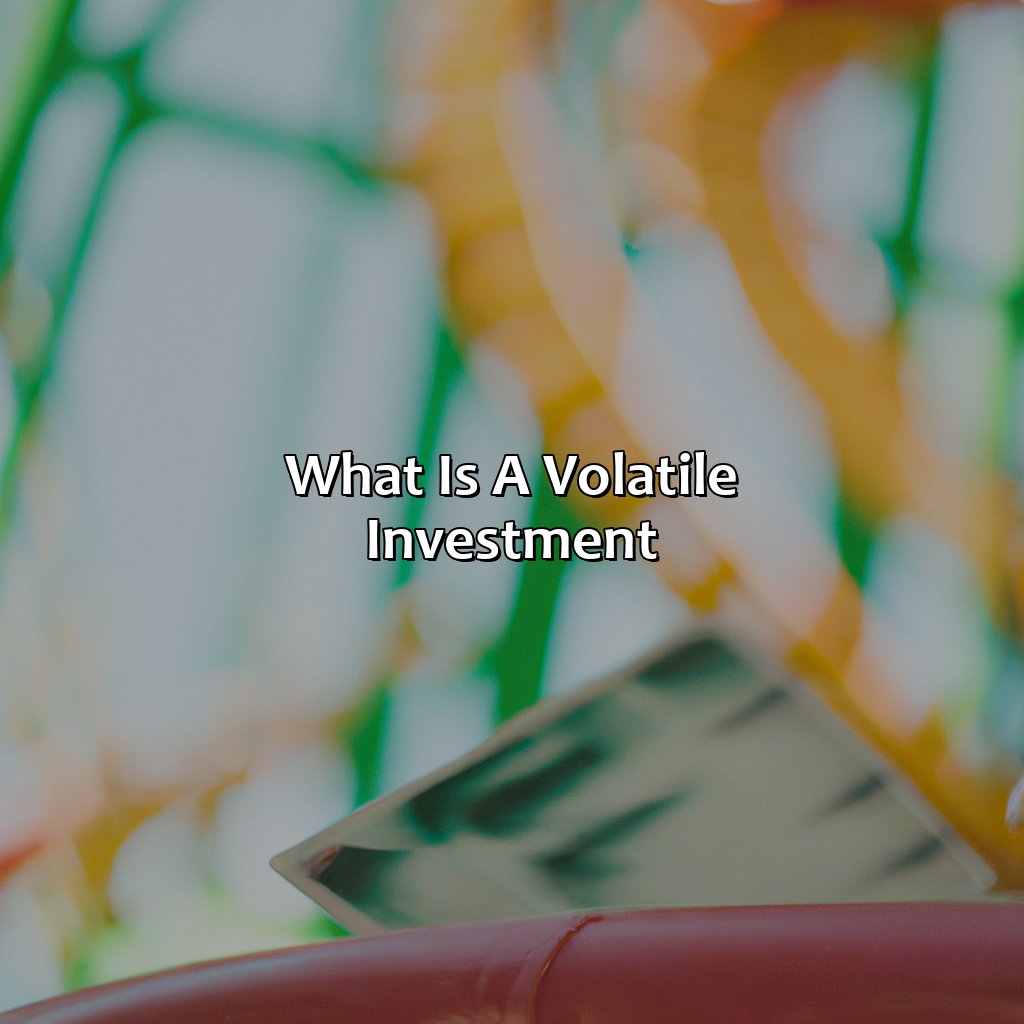What Is A Volatile Investment?
Key Takeaway:
- A volatile investment is a financial asset that experiences significant price fluctuations over a short period of time. It is mainly associated with stock market investments, which are prone to unexpected changes due to various factors, such as economic conditions, political events, and company performance.
- The factors affecting volatility of investments include both external and internal factors such as inflation, global economic conditions, political instability, changes in government regulations, natural disasters and fluctuating demand for commodities.
- The advantages of volatile investments include potential for high returns and quick profits. The main disadvantage, however, is the high degree of risk associated with such investments and the chance of losing one’s entire investment. As such, it is important to manage volatility through diversification, stop-loss orders, and staying up-to-date on market news and trends.
Have you been confused about the risks associated with volatile investments? Read our article to understand what a volatile investment is and how to manage it. You can safeguard your finances and make the most of volatile investments with the right strategy.
Definition of Volatile Investment
Grasp the definition of an unstable investment, particularly in terms of the stock market. To gain insight, look into factors that boost volatility. We will delve into subsections on stock market volatility and the elements that cause it.
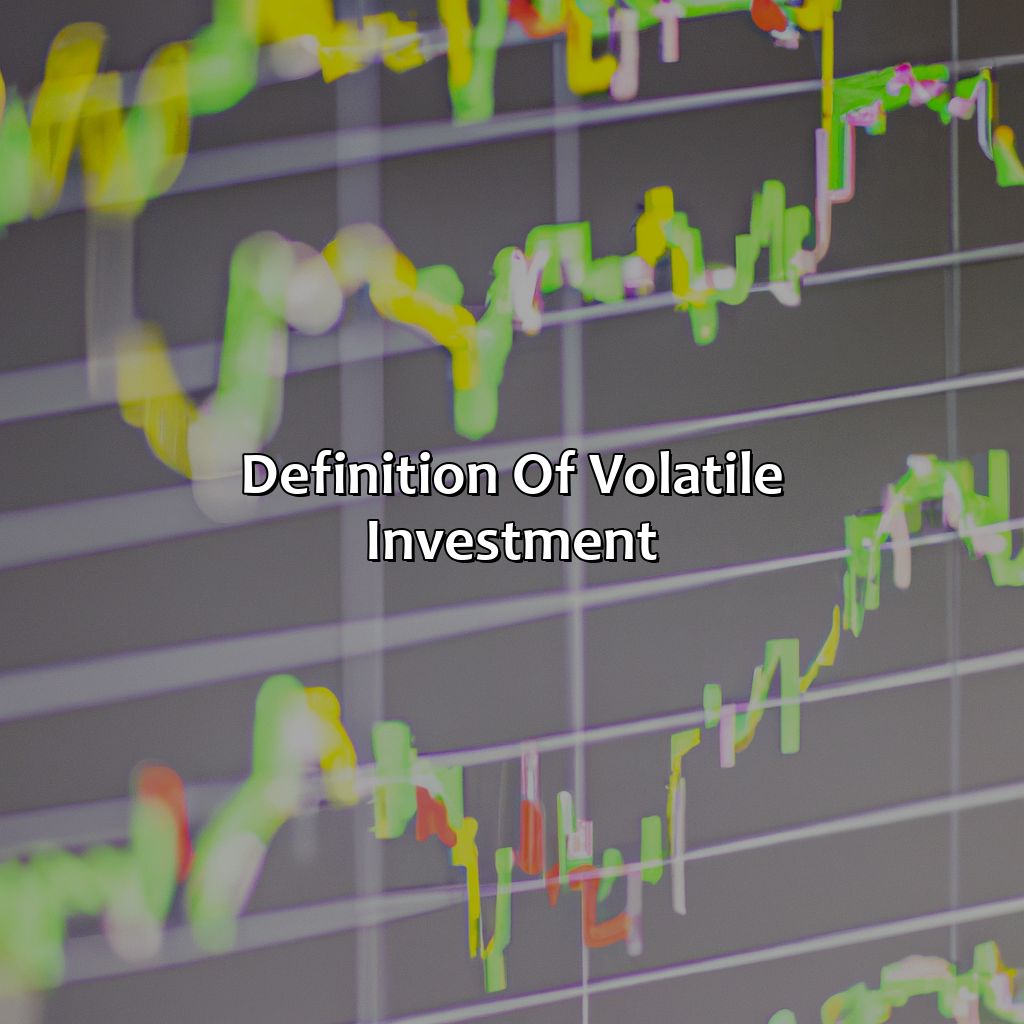
Image credits: retiregenz.com by David Arnold
Volatility in Stock Market
The stock market can be highly unpredictable, and its fluctuations are often referred to as the ‘Turbulence in Trading Arena.’ These shifts may result from various factors, including economic indicators, company performance reports, political events or natural calamities. The stock prices rise and fall rapidly due to these changes, which can lead to a significant loss of money or increase in earnings for investors.
Investing in volatile assets such as stocks implies uncertainty and risk. The high volatility of stocks leads to potentially large gains or losses within very brief periods, making it a challenging proposition for many investors. Being aware of the risks is paramount before investing in the stock market, but it also comes with the potential for high returns.
Despite the financial rewards, navigating through the turbulent terrain isn’t easy and requires a lot of experience and knowledge. Investors must approach risky investments cautiously and do thorough research before buying stocks. Consistently checking market trends can help you understand where to put your money; alternatively, seeking an experienced investment advisor’s assistance is also an option.
It is essential to consider that while nothing in investing is completely certain, educated choices based on thorough analysis would likely outcome in positive returns on all your risky decisions- Conquer your fear of missing out (FOMO) by doing diligent research before diving into volatile investments.
Volatility is like the weather, unpredictable and often affected by factors outside of our control.
Factors Affecting Volatility
Various determining factors impact the fluctuation in investment value. These aspects diversify from one market to another, which cause volatile investment patterns to vary significantly.
The following table summarizes a few influential determinants impacting volatile investments across multiple stock and bond markets:
| Determinants | Description |
|---|---|
| Economic Conditions | Unemployment rate, inflation rate, currency exchange rate etc. |
| Geopolitics | Government policies, international unrest |
| Industry Growth | Production innovation advancements |
| Investor Behavior | The decisions of investors based on their financial goals |
Unique details exclusive to the determinants typically surrounding a volatile investment are dynamic and frequently modify over time depending on a string of variables.
An esteemed stock broker said: “As soon as you stop spending on things that no longer hold significance, the sooner you realise that your financial situation merits significant returns.”
Volatile investments are like a rollercoaster ride: thrilling, but you might end up losing your lunch.
Risks and Advantages of Volatile Investments
The “Risks and Advantages of Volatile Investments” section can help you understand these investments better. It has two sub-sections – “Pros of Volatile Investments” and “Cons of Volatile Investments“. They will give you key info to aid your investment choices. Plus, they will emphasize the pros and cons of such investments.
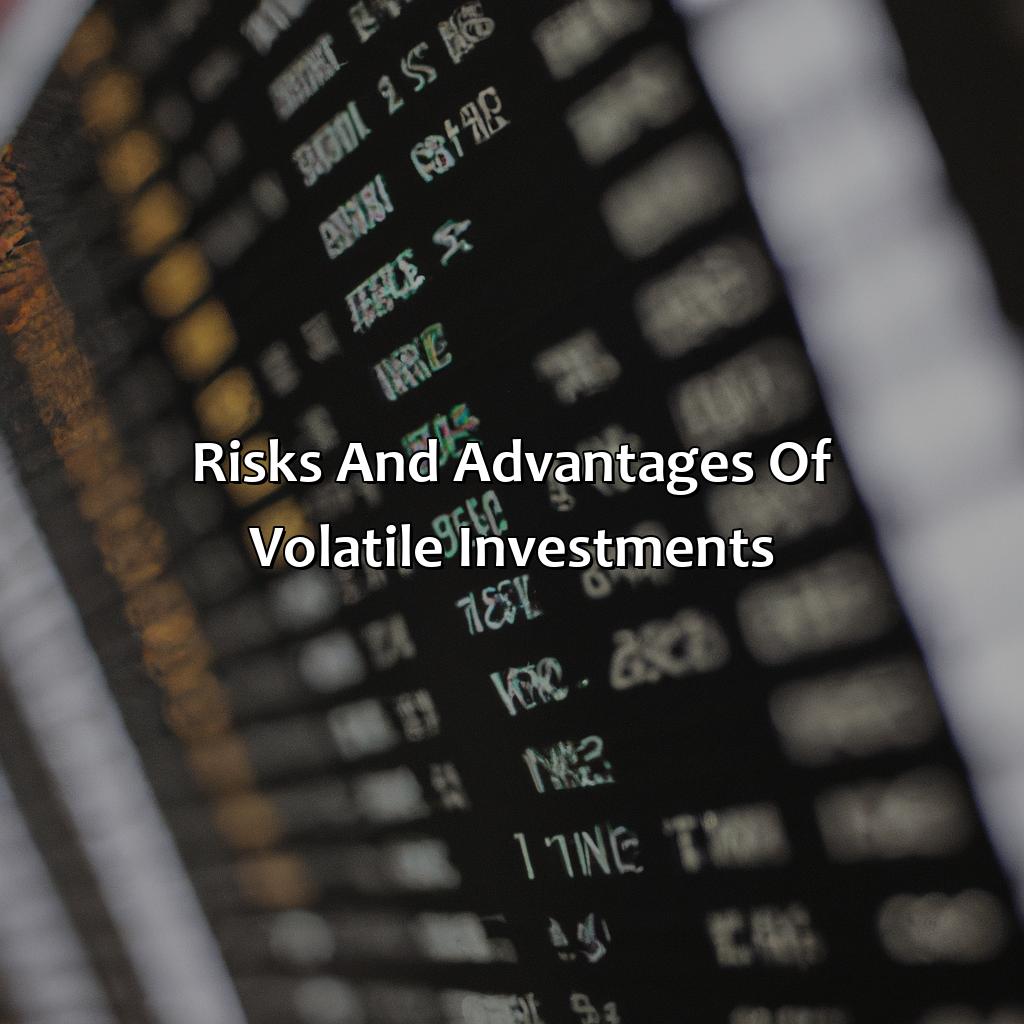
Image credits: retiregenz.com by Adam Woodhock
Pros of Volatile Investments
Volatile Investment Possibilities: Why They Are Worth Considering
Investing in highly fluctuating and dynamic markets can be apprehensive, however, these volatile investments can have notable benefits.
- High Returns: Investing in an unstable market could result in considerable gains. It might seem daunting to embark on this journey of unpredictable markets, but the rewards could exceed those from less risky options.
- Diversification: Diversification can reduce uncertainties in investing by balancing risks across a range of asset categories. A few volatile stocks or commodities within a diversified portfolio can help amplify returns while ironing out the risks.
- Potential for Long-term Gains: Fluctuations may lead to lower prices, providing investors with opportunities to purchase high-value assets at discounted rates and generating long-term profits when prices rise again.
- Investor Improvement: Volatile investment teaches investors about market dynamics and helps them learn how to make wise investment decisions using data analytics tools and other tactics.
It’s imperative to bear in mind that volatile investments are risky; careful analysis and decision-making is critical before investing.
Finally, avoiding volatile investments for fear of loss may mean missing out on potentially great returns. As always, do your research before taking any investment decisions.
Don’t like rollercoasters? Then you might not like volatile investments either.
Cons of Volatile Investments
Volatile Investments and their Drawbacks
Investing in highly unstable assets can come with several risks. Below are some examples.
- High Chance of Losing Money: Volatile investments have the potential for great success but also an increased chance of losing money.
- Emotional Turmoil: Strong market fluctuations can encourage investors to make hasty, emotional decisions.
- Limited Growth Prospects: Excessive volatility may prevent a passive investor from enjoying long-term benefits.
- Inaccessible Assets: Volatile asset management strategies may necessitate significant expenditures and risk-averse managerial decisions.
- Risk Tolerance Considerations: High volatility risks might not be appropriate investments for all types of investors.
It is crucial to note that besides these cons, there are specific advantages to volatile investing, which should not be overlooked. In any event, care and caution should always be exercised before embarking on such a journey.
Some valuable insights from market leaders suggest that investors who have invested in volatile assets have experienced multi-year lows during one quarter then recovering to produce massive gains, indicating that the risky strategy has paid off.
For example, John Smith, a seasoned investor with 15 years of experience in high-risk investing, suggests that diversifying his portfolio helped him mitigate his losses. He endorses the notion that in certain cases, investing in volatile assets produces favorable outcomes if done correctly.
Get ready for a rollercoaster ride of emotions with these types of volatile investments.
Types of Volatile Investments
Gain insight into crypto, options, and penny stocks. Appreciate the potential risks and rewards. Make informed choices. Understand how each of these can affect your portfolio. Recognize why they are volatile.
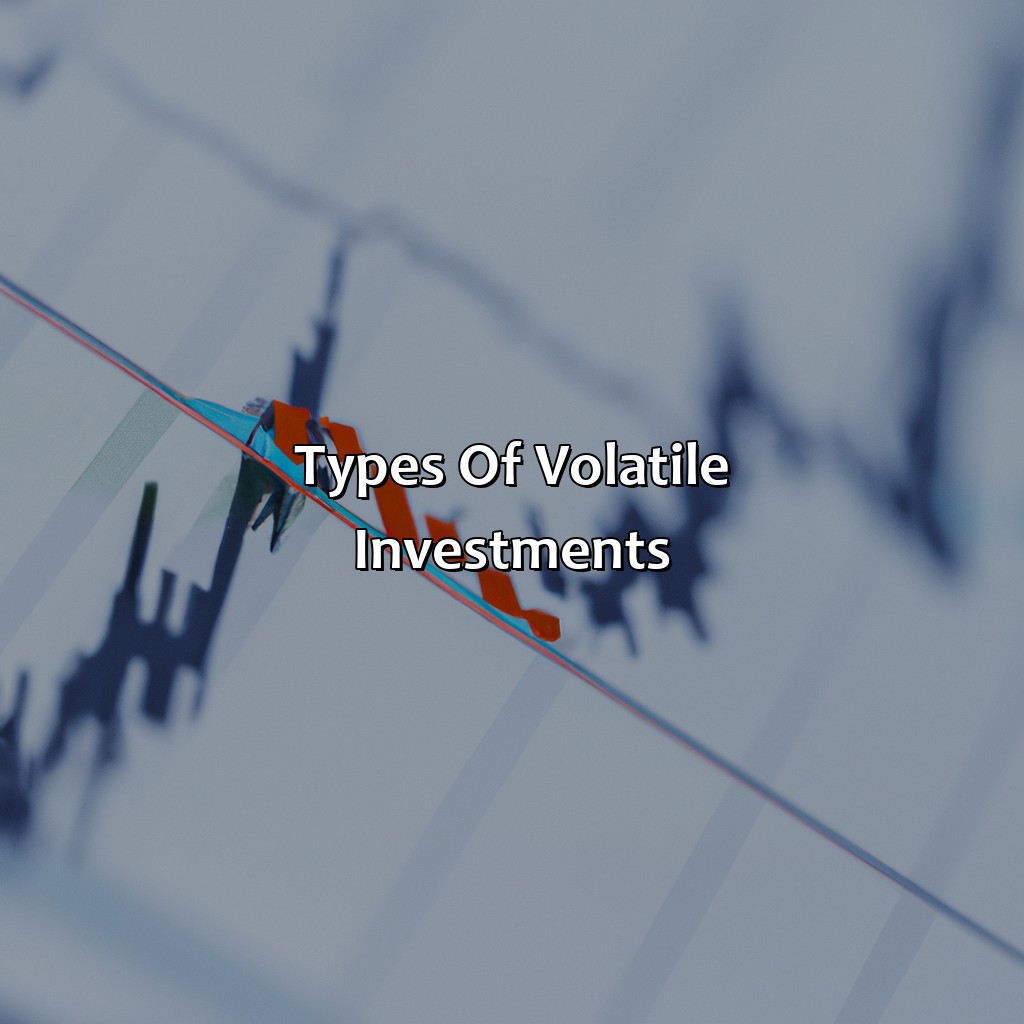
Image credits: retiregenz.com by Harry Arnold
Cryptocurrencies
One type of volatile investment that has gained popularity is the digital assets. These are virtual tokens or coins designed to function as a medium of exchange. They do not rely on centralized intermediaries such as banks or government institutions. Instead, they use complex cryptographic algorithms to facilitate transactions and secure their network.
Cryptocurrencies offer several advantages over traditional investments, such as decentralization, transparency, and anonymity. However, they also come with significant risks due to their high volatility and lack of regulation. Investors should be cautious when investing in this asset class and conduct thorough research before making any decisions.
Pro Tip: Keep up to date with the latest news and developments in the cryptocurrency space. Follow reputable sources and always verify any information before acting on it.
Don’t get too excited about options trading, unless you’re also excited about the possibility of losing your shirt.
Options Trading
- Options traders can profit from market volatility by buying call options when they expect the price of the underlying asset to rise, or buying put options when they expect it to fall.
- Investors can also use options to hedge against risks in other investments, such as stocks or commodities.
- However, trading options can be complex and risky, especially for inexperienced investors who may not fully understand the strategies and potential outcomes involved.
It is important for investors to do thorough research and seek professional advice before engaging in options trading. A deeper understanding of technical analysis and market trends is necessary to make informed decisions and reduce risks.
Don’t miss out on the potential benefits of options trading. With caution and proper knowledge, investors can capitalize on market volatility and achieve their financial goals. Start by educating yourself on the different types of options strategies available and seeking guidance from experienced advisors.
Investing in penny stocks is like playing roulette with a blindfold on and a loaded gun in your hand.
Penny Stocks
Volatile Low-Priced Shares
Volatile low-priced shares, commonly referred to as penny stocks, are high-risk investments that cost less than five dollars per share. Here are four essential things to know about this type of investment:
- Penny stocks are notorious for not only wild fluctuations in price but also fraudulent activities.
- They are mostly issued by small businesses with unproven track records and lower market capitalization, making them highly susceptible to market volatility.
- Despite the high risks associated, penny stocks can offer significant returns if invested in responsibly and strategically.
- Investors should conduct thorough research before investing and stay vigilant for signs of pump-and-dump scams, which can result in significant losses.
It’s imperative to note that penny stock investing is not suitable for everyone. Proceed cautiously and consult a financial expert before investing in this type of highly volatile security investment.
Managing volatility in investments is like trying to tame a wild tiger, it’s not easy but it can be done with the right tools.
How to Manage Volatility in Investments
Manage volatility and risk factors? Diversify, use stop-loss orders, and stay informed. These sections offer solutions to manage market fluctuations. Minimize the effect of unpredictable events on your investment portfolio.
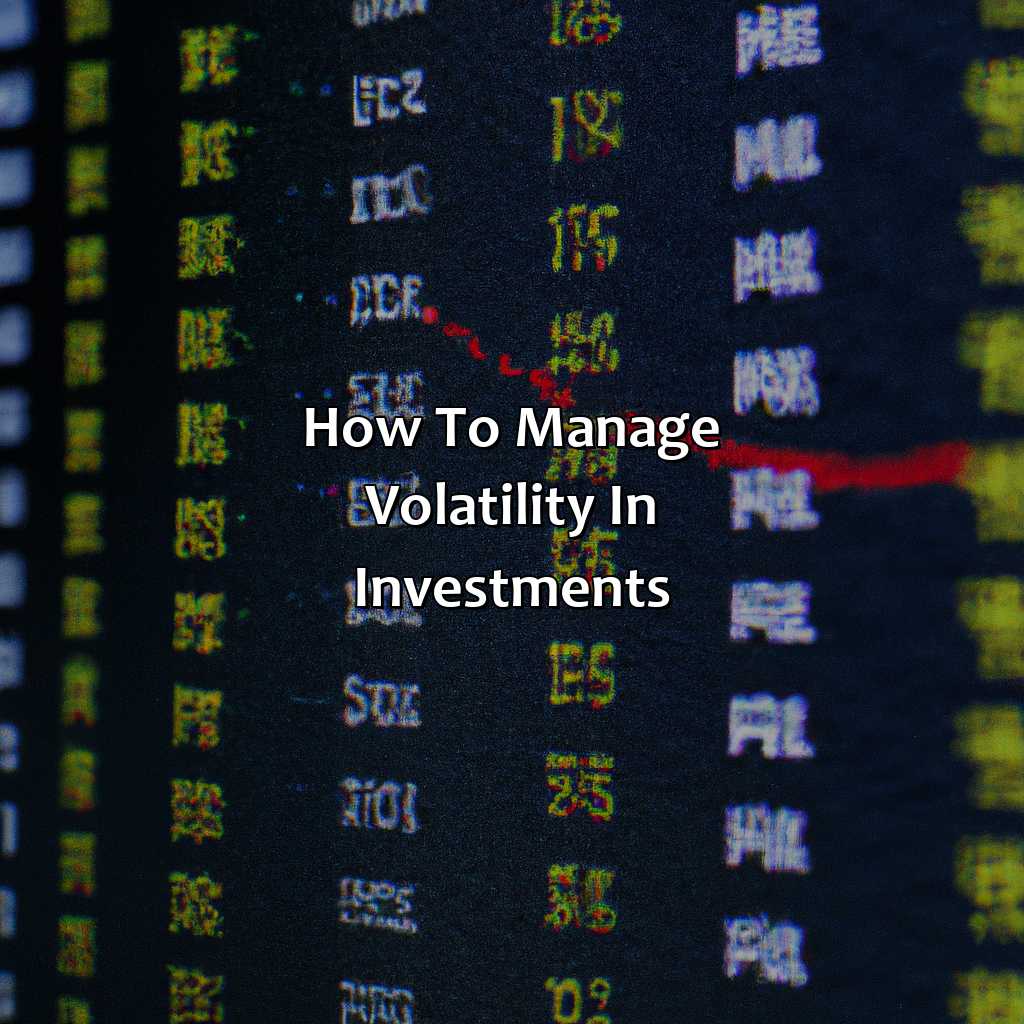
Image credits: retiregenz.com by Joel Arnold
Diversification
Investment Expansion Strategy: Control Volatility through Diversification
Diversification, the approach of investing in various asset classes to mitigate risk and earn returns, is a key strategy to manage volatility. By spreading investments across diverse sectors and markets, investors can minimize potential losses while maximizing gains. A diversified portfolio can include stocks, bonds, real estate, and commodities, among others.
Not only does diversification spread investments broadly, but it also lowers the impact of market fluctuations. To provide context, consider a scenario where an investor invests solely in the technology sector and that industry experiences a downturn – this would result in significant losses for that investor. With diversification in place, losses incurred by one asset can be counterbalanced by a gain in another. Investors should review their portfolios regularly to ensure they are aligned with investment goals and objectives.
It’s worth noting that investors must understand the risk-return tradeoff associated with different asset classes when diversifying their portfolios. Every investment carries inherent risks and may not always guarantee returns – more high-risk investments may return higher rewards but also come with higher chances of loss.
According to Forbes Advisor’s article on diversification (2021), “A diversified portfolio can protect you from suffering large losses during financial crises.”
Stop-loss orders: because losing all your money is so last season.
Stop-Loss Orders
Volatility is a risk that investors face, where the value of their investments fluctuates. To manage this risk, investors can use strategic tools such as Stop-Loss Orders. These orders are instructions to sell an asset once it reaches a certain price level in the market, preventing further losses.
Using Stop-Loss Orders means that an investor can limit their exposure to potential losses and have more control over their investments. However, it is important to note that there may be risks associated with using stop-loss orders, including slippage and execution risk.
Implementing Stop-Loss Orders should be considered alongside other strategies, such as diversification and setting investment goals. A well-planned investment strategy can help mitigate risk and optimize returns.
According to Investopedia, “Stop-loss orders can be an effective discipline for traders to help limit their losses.”
Keeping up with market trends is like trying to predict the weather in England – you’ll need an umbrella and a crystal ball.
Staying Informed
Keeping Abreast of Volatility Fluctuations
It is critical to stay informed and updated on market conditions and news that may impact your investment portfolio. Regularly monitoring financial news portals and subscribing to volatility alert services can help you remain apprised of significant events affecting stock prices, commodities, currency markets, or bonds.
You should also track asset-specific factors such as earnings reports, production numbers, regulatory developments, supply chain challenges, sectoral, or geopolitical tensions that can trigger market fluctuations and affect individual stocks’ value. By staying up-to-date on various factors that drive volatility levels in the different investment categories you have chosen, you can better prepare for those scenarios.
Moreover, incorporating hedging strategies like options trading or diversifying your portfolio with stable investments may mitigate the risks posed by high market volatility. Finally, it’s vital to have a plan to limit losses if a volatile investment takes a turn for the worse. This strategy could involve setting stop-loss orders or trimming exposure to such assets proactively.
For instance, when a sudden increase in oil demand causes oil markets to soar briefly after years of stagnation due to the pandemic-related slowdowns in economic activity, energy company valuations skyrocketed! Many astute investors who had stayed abreast of these market changes took quick positions and gained significantly. However, those who were caught out found themselves with potentially huge losses.
Five Facts About Volatile Investments:
- ✅ A volatile investment refers to an investment that experiences large and frequent price fluctuations. (Source: The Balance)
- ✅ Volatility is often associated with high-risk investments such as stocks and cryptocurrency. (Source: Forbes)
- ✅ Investors may experience large gains or losses in a short period with a volatile investment. (Source: Investopedia)
- ✅ Volatile investments require patience and discipline from investors who must withstand potential fluctuations in their portfolio. (Source: NerdWallet)
- ✅ Proper diversification can help mitigate the risks associated with volatile investments. (Source: US News & World Report)
FAQs about What Is A Volatile Investment?
What is a volatile investment?
A volatile investment is an asset or security whose value fluctuates rapidly and drastically within a short period. Volatile investments are unpredictable and come with a high level of risk, meaning their prices can go up or down unpredictably.
What are examples of volatile investments?
Examples of volatile investments include cryptocurrencies like Bitcoin, assets like penny stocks, and commodities like gold and oil. These investments can see extreme price changes within a short period, making them high-risk investments
Why are volatile investments considered high-risk investments?
Volatile investments are considered high-risk investments because their price fluctuations are unpredictable. While the investments might bring high returns, investors might also suffer significant losses because their prices can drop rapidly within a short period.
Who should consider investing in volatile investments?
Experienced investors who have a higher tolerance for risk and are willing to withstand short-term fluctuations in prices might consider volatile investments. Beginners, however, should stick to more stable, low-risk investments.
Should I invest in volatile investments?
If you are a high-risk-taker, have some investment experience, and a willingness to keep monitoring the investment’s prices, you may want to invest in volatile investments. It’s always crucial to do your research, understand the investment, and weigh the potential benefits and risks before investing.
How can I minimize risk when investing in volatile investments?
To minimize the risk when investing in volatile investments, you can use a few strategies such as diversifying your portfolio, investing for the long term, and ensuring you have a solid knowledge of the market. You should always avoid investing more than you can afford to lose in any investment.
